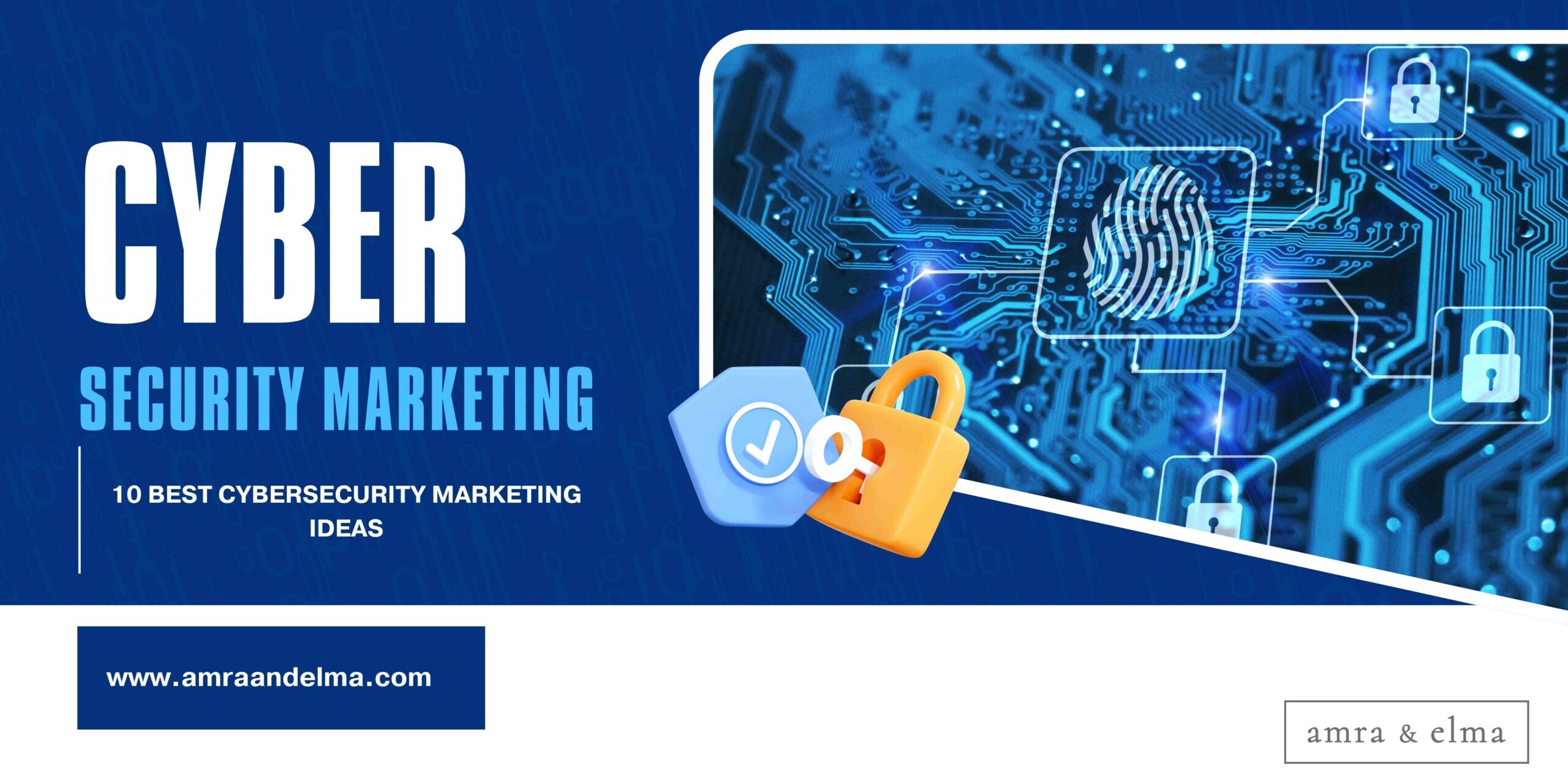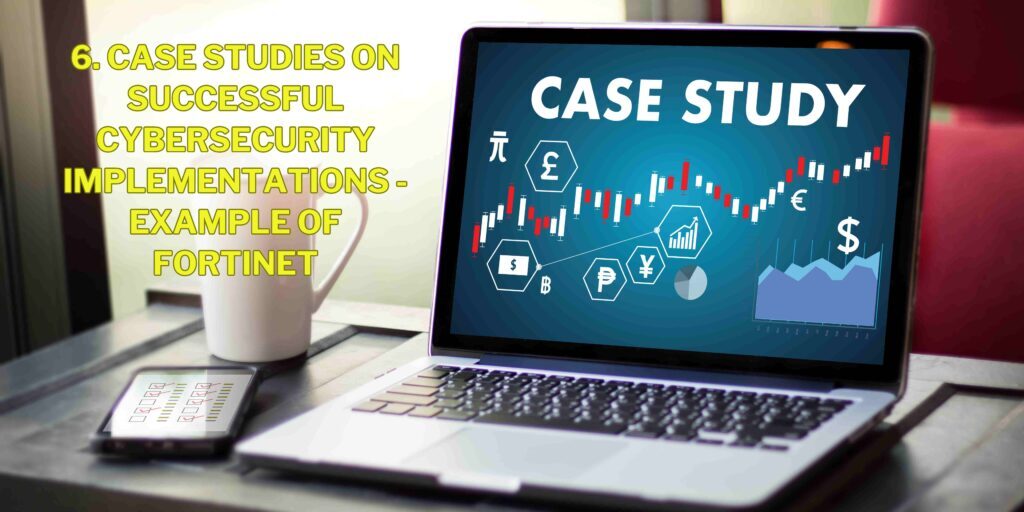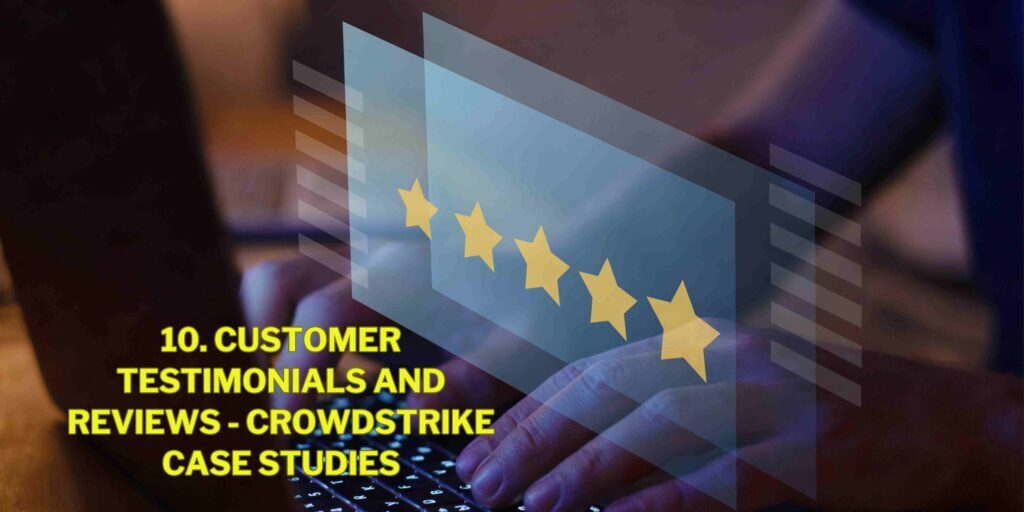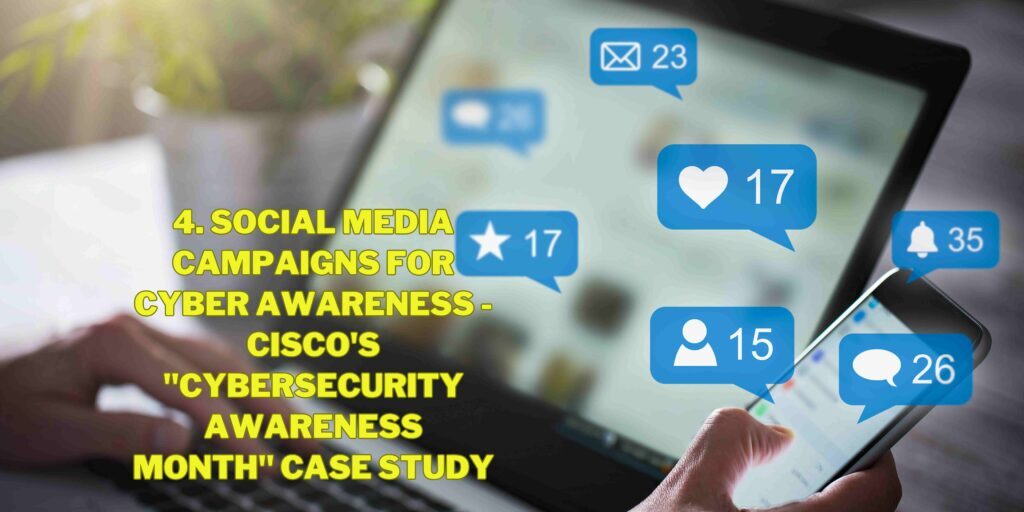
28 Mar 10 BEST CYBERSECURITY MARKETING IDEAS
In the world of cybersecurity, where digital threats loom large and data security is paramount, effective marketing strategies play a critical role in educating, engaging, and empowering businesses and consumers. The landscape of cybersecurity marketing is dynamic and ever-evolving, driven by innovation, technology advancements, and the constant battle against cyber threats. In this article, we dive into the 10 best cybersecurity marketing ideas that not only raise awareness but also inspire action, helping cybersecurity companies stand out in a competitive market and build trust with their audience.
These marketing ideas encompass a range of strategies, from content marketing and thought leadership initiatives to social media campaigns and interactive webinars. By leveraging these innovative approaches, we at Amra and Elma hope to shed light on how to effectively communicate the value of Cybersecurity brand solutions, educate their target audience on cybersecurity best practices, and position themselves as trusted partners in safeguarding digital assets. Ultimately, these ideas aim to strengthen cybersecurity awareness, drive engagement, and foster long-term relationships built on trust and credibility in an increasingly digital world.
10 Best Cybersecurity Marketing Ideas with Case Study Examples
What is Cybersecurity Marketing?
Cybersecurity marketing is a specialized field within the broader marketing landscape that focuses on promoting cybersecurity products, services, and solutions to businesses and consumers. It involves crafting strategic marketing campaigns that highlight the importance of cybersecurity in today’s digital age, emphasizing the need for robust protection against cyber threats such as data breaches, malware, ransomware, and phishing attacks.
Effective cybersecurity marketing encompasses various strategies, including content marketing, social media marketing, email marketing, search engine optimization (SEO), and targeted advertising. It also involves educating and raising awareness among target audiences about cybersecurity best practices, compliance regulations, and the benefits of investing in reliable cybersecurity solutions. Ultimately, cybersecurity marketing aims to build trust, credibility, and brand loyalty by positioning cybersecurity providers as trusted advisors and partners in safeguarding digital assets and sensitive information.
What Can Cybersecurity Companies Expect from Implementing a Cybersecurity Marketing Campaign?
Cybersecurity companies can expect tangible results from running a cybersecurity marketing campaign, including increased brand visibility and awareness. According to a report by Cybersecurity Ventures, global spending on cybersecurity products and services is projected to exceed $1 trillion cumulatively over the next five years. This indicates a growing market where companies need to stand out to capture market share. By investing in targeted marketing efforts, cybersecurity firms can ensure that their solutions are top-of-mind for businesses and consumers looking to enhance their digital security.
Moreover, a well-crafted cybersecurity marketing campaign can significantly impact lead generation and customer acquisition metrics. Research from HubSpot shows that companies that prioritize blogging as part of their content marketing strategy are 13 times more likely to achieve a positive return on investment (ROI). By consistently producing high-quality content that addresses cybersecurity challenges, companies can attract and engage potential customers, leading to increased sales opportunities and revenue growth.
Additionally, establishing thought leadership through cybersecurity marketing initiatives can yield substantial benefits. According to a survey by Edelman and LinkedIn, 58% of decision-makers said that thought leadership directly led them to award business to a company. By showcasing expertise, sharing industry insights, and offering valuable resources, cybersecurity companies can build trust, credibility, and authority within their target market, ultimately driving business success and competitive advantage.
What Makes a Cybersecurity Campaign Effective?
Effective cybersecurity campaigns are characterized by several key elements that contribute to their success. Firstly, clear and targeted messaging is crucial. Cybersecurity is a complex topic, so campaigns must convey their message in a concise and understandable manner. This includes highlighting the specific benefits and value propositions of the cybersecurity solutions being promoted, such as advanced threat detection capabilities, data protection features, and compliance adherence. Tailoring the message to resonate with the target audience’s pain points and priorities ensures that the campaign attracts the right attention and generates meaningful engagement.
Secondly, leveraging multiple channels and formats enhances the reach and impact of cybersecurity campaigns. This includes using a combination of content marketing, social media, email marketing, webinars, and industry events to engage with prospects and customers across different touchpoints. For example, creating informative blog posts, producing engaging videos, hosting interactive webinars, and participating in industry conferences can create a holistic and immersive experience for the audience. By diversifying the campaign’s approach, cybersecurity companies can capture attention, drive engagement, and nurture relationships with their audience effectively.
10 Best Cybersecurity Marketing Campaigns with Examples
1. Content Marketing with Educational Blog Posts (Palo Alto Networks Case Study)
A. Marketing Idea: Creating informative and educational blog posts about cybersecurity trends, best practices, and tips is a powerful strategy. This approach helps in educating the target audience about the importance of cybersecurity, providing valuable insights into emerging threats, and offering practical guidance on how to enhance their digital security posture.
B. Case Study: Palo Alto Networks, a leading cybersecurity company, exemplifies this strategy through their blog called “Unit 42.” They regularly publish in-depth articles covering a wide range of cyber threats, incident response strategies, threat intelligence, and cybersecurity best practices. For example, articles on ransomware mitigation strategies, data protection techniques, and cloud security trends provide actionable insights to their audience. By sharing valuable and timely content, Palo Alto Networks has positioned itself as a thought leader in the cybersecurity industry, attracting a broad audience interested in staying informed and protected against evolving cyber risks.

2. Webinars on Cybersecurity Topics – Check Point Software Case Study
A. Marketing Idea: Hosting webinars featuring cybersecurity experts discussing relevant topics such as ransomware prevention, cloud security, or data privacy is an effective strategy to engage and educate the audience. These webinars offer a platform for interactive discussions, Q&A sessions, and practical demonstrations, enhancing the learning experience for participants.
B. Case Study: Check Point Software showcases this strategy through their regular webinars covering various cybersecurity issues. For instance, they host webinars on topics like “Advanced Threat Prevention Strategies” and “Securing Remote Work Environments,” attracting professionals seeking insights into the latest cybersecurity trends and solutions. These webinars not only educate their audience but also generate leads as attendees sign up to learn from their experts and explore Check Point’s cybersecurity offerings.

3. Interactive Infographics on Cyber Threats – IBM Security
A. Marketing Idea: Creating visually appealing and interactive infographics that illustrate cyber threats, attack vectors, and security statistics is an impactful way to communicate complex information in an engaging format. Infographics combine visual elements, data visualization, and concise messaging to convey key cybersecurity insights effectively.
B. Case Study: IBM Security’s interactive infographic “X-Force Threat Intelligence Index” presents data on cybersecurity threats worldwide, including trends, attack patterns, and industry-specific insights. This interactive format allows users to explore threat intelligence data interactively, gaining a deeper understanding of cybersecurity risks. By leveraging interactive infographics, IBM Security engages its audience and enhances knowledge sharing in the cybersecurity community.
4. Social Media Campaigns for Cyber Awareness – Cisco’s “Cybersecurity Awareness Month” Case Study
A. Marketing Idea: Launching social media campaigns to raise awareness about cybersecurity risks, share tips, and promote cybersecurity solutions is essential for reaching a broader audience. Social media platforms offer a dynamic and interactive environment to engage with users, share valuable content, and drive conversations about cybersecurity.
B. Case Study: Cisco’s “Cybersecurity Awareness Month” campaign on social media features daily posts with cybersecurity tips, statistics, infographics, and resources. They use hashtags like #CyberSecurityAwarenessMonth and #StaySafeOnline to amplify their message and encourage audience participation. Through engaging content and interactive quizzes, Cisco educates their followers about cybersecurity best practices and promotes their cybersecurity solutions, contributing to increased awareness and proactive cybersecurity behavior among users.
5. Email Newsletters with Security Insights – Proofpoint’s “Threat Intelligence Newsletter”
A. Marketing Idea: Sending regular email newsletters to subscribers with cybersecurity news, insights, product updates, and industry trends helps in keeping the audience informed and engaged. Email newsletters provide a direct channel to communicate with subscribers, deliver personalized content, and nurture relationships with prospects and customers.
B. Case Study: Proofpoint’s “Threat Intelligence Newsletter” delivers curated content about emerging threats, security research, best practices, and product updates to their subscribers. They include threat alerts, security tips, and educational resources to help readers stay informed and protected against evolving cyber threats. By delivering valuable insights via email newsletters, Proofpoint strengthens its brand presence, fosters customer loyalty, and drives engagement with its cybersecurity audience.

6. Case Studies on Successful Cybersecurity Implementations – Example of Fortinet
A. Marketing Idea: Publishing case studies that showcase successful cybersecurity implementations, highlighting challenges, solutions, and outcomes, is a persuasive way to demonstrate the effectiveness of cybersecurity solutions. Case studies provide real-world examples and tangible results, building trust and credibility among potential customers.
B. Case Study: Fortinet publishes case studies on their website featuring real-world scenarios where their cybersecurity solutions helped organizations prevent cyber attacks, improve security posture, and achieve business goals. For instance, a case study on a financial institution’s network security upgrade showcases how Fortinet’s solutions enhanced threat detection, reduced security incidents, and ensured regulatory compliance. By sharing these success stories, Fortinet reinforces its reputation as a trusted cybersecurity partner and attracts new customers seeking proven security solutions.

7. Thought Leadership Articles in Industry Publications – Symantec’s Case Study
A. Marketing Idea: Contributing thought leadership articles to industry publications and blogs to share expertise, insights, and trends in cybersecurity establishes authority and reaches a broader audience. Thought leadership articles demonstrate industry knowledge, innovation, and thought leadership, positioning companies as trusted advisors.
B. Case Study: Symantec’s experts contribute articles to cybersecurity magazines like Dark Reading and Infosecurity Magazine, addressing topics such as threat intelligence, cloud security, and zero-trust architecture. These thought leadership articles provide valuable insights, practical advice, and strategic guidance to cybersecurity professionals and decision-makers. By sharing thought leadership content, Symantec enhances brand visibility, builds credibility, and fosters engagement within the cybersecurity community.

8. Podcasts on Cybersecurity Topics – McAfee Case Study
A. Marketing Idea: Hosting podcasts with cybersecurity experts discussing industry trends, threat intelligence, and best practices is a modern and engaging way to connect with the audience. Podcasts offer a platform for in-depth discussions, interviews, and storytelling, making complex cybersecurity topics more accessible and engaging.
B. Case Study: McAfee’s podcast series “Hackable?” explores real-world cyber attacks, vulnerabilities, and security tips, allowing them to share valuable insights and establish rapport with listeners. The podcast features expert guests, industry insights, and practical advice on cybersecurity challenges, making it a valuable resource for cybersecurity professionals and enthusiasts. By producing engaging and informative podcasts, McAfee expands its reach, builds brand authority, and fosters community engagement in the cybersecurity space.

9. Virtual Events and Conferences – RSA Conference
A. Marketing Idea: Hosting virtual events and conferences focused on cybersecurity topics with keynote speakers, panel discussions, and networking opportunities is an innovative strategy to engage and educate the audience. Virtual events offer a platform for global participation, knowledge sharing, and collaboration, making them accessible to a wider audience.
B. Case Study: RSA Conference, a prominent cybersecurity conference, went virtual in 2021 due to the pandemic, attracting thousands of attendees interested in cybersecurity trends, innovations, and solutions. The virtual event featured keynote sessions, technical tracks, virtual expo halls, and networking opportunities, providing a comprehensive and interactive experience for participants worldwide. By embracing virtual events, RSA Conference demonstrated agility, resilience, and innovation in delivering valuable cybersecurity insights and fostering industry collaboration.

10. Customer Testimonials and Reviews – CrowdStrike Case Studies
A. Marketing Idea: Customer testimonials and reviews are invaluable assets for showcasing the benefits and effectiveness of cybersecurity solutions. Incorporating these testimonials into marketing strategies allows companies to leverage the positive experiences of satisfied customers to build trust and credibility among potential buyers. By highlighting real-world outcomes and success stories, businesses can demonstrate how their cybersecurity solutions have helped organizations mitigate cyber threats, enhance security postures, and achieve measurable results.
B. Case Study: An excellent example of leveraging customer testimonials and reviews is seen in CrowdStrike’s marketing approach. On their website, CrowdStrike features compelling customer testimonials and detailed case studies from organizations that have successfully defended against cyber threats using their endpoint security solutions. These testimonials and success stories serve as powerful endorsements, showcasing CrowdStrike’s effectiveness in combating cybersecurity challenges and protecting businesses from sophisticated threats. Through these real-world examples, CrowdStrike not only reinforces its brand reputation but also provides potential customers with concrete evidence of the value and impact of its cybersecurity solutions.

How to Create an Effective Cybersecurity Marketing Campaign?
Creating a great cybersecurity campaign requires a comprehensive approach that encompasses various strategic elements. Here’s an expanded guide with detailed paragraphs for each step:
- Define Campaign Objectives: Begin by clearly defining the objectives of your cybersecurity campaign. Determine specific goals such as increasing brand awareness, generating leads, driving product adoption, or educating the audience about cybersecurity threats and solutions. For example, if your goal is to raise awareness about the importance of multi-factor authentication (MFA) in preventing cyber attacks, your objective could be to educate a certain percentage of your target audience about MFA and its benefits within a specified timeframe. Setting clear and measurable objectives helps in aligning your campaign strategy and evaluating its success.
- Understand Your Target Audience: Conduct thorough research to understand your target audience’s demographics, behaviors, preferences, challenges, and knowledge level regarding cybersecurity. Segment your audience based on factors such as industry verticals, job roles, company sizes, and pain points related to cybersecurity. Use techniques like persona development and customer journey mapping to create detailed profiles of your target audience segments. For instance, if your target audience consists of IT professionals in the healthcare sector, you would tailor your campaign messaging to address their specific cybersecurity concerns related to patient data protection, regulatory compliance, Virtual Private Network (VPN), VPN services online, and security best practices in healthcare IT environments.
- Develop Compelling Messaging: Craft compelling and relevant messaging that resonates with your target audience’s needs, interests, and pain points. Develop a value proposition that clearly communicates the benefits of your cybersecurity solution or message. Use language that is easy to understand yet impactful, avoiding technical jargon that may alienate non-technical audiences. Incorporate storytelling techniques to make your messaging more engaging and memorable. For example, instead of simply stating the features of your security software, tell a story about how it helped a client overcome a cybersecurity challenge and improve their security posture.
- Choose the Right Channels: Select the most appropriate channels to reach and engage your target audience effectively. Consider factors such as where your audience spends their time online, their preferred communication channels, and the types of content they consume. Utilize a mix of digital channels such as social media platforms (e.g., LinkedIn, Twitter, Facebook), email marketing, content marketing (e.g., blogs, whitepapers, ebooks), webinars, virtual events, industry publications, and influencer collaborations. Tailor your content and messaging for each channel to maximize engagement and impact.
- Create Engaging Content: Develop high-quality and engaging content that provides value, educates, informs, and inspires your audience. Leverage a variety of content formats such as blog posts, infographics, videos, case studies, podcasts, interactive quizzes, and tools. Address common cybersecurity challenges, share best practices, showcase success stories, and provide actionable insights. For example, create a series of educational videos on cybersecurity fundamentals, conduct live webinars with industry experts discussing hot topics, or publish in-depth case studies highlighting how your solution solved specific cybersecurity problems for clients.
- Leverage Thought Leadership: Position your company as a thought leader in cybersecurity by sharing valuable insights, industry trends, and expert opinions. Publish thought leadership articles, research reports, whitepapers, and industry guides that demonstrate your expertise and thought leadership in cybersecurity. Participate in industry events, conferences, webinars, and panel discussions as a speaker or panelist to showcase your knowledge and establish credibility. Collaborate with industry influencers, analysts, and media outlets to amplify your thought leadership content and reach a broader audience.
- Implement Strong Call to Action (CTA): Include clear and compelling calls to action (CTAs) in your campaign materials to prompt desired actions from your audience. Whether it’s downloading a whitepaper, registering for a webinar, requesting a demo, subscribing to a newsletter, or contacting your sales team, make it easy for users to take the next step. Use action-oriented language, emphasize the value proposition of the CTA, and create a sense of urgency or exclusivity to motivate conversions. Test different CTAs, placement strategies, and messaging variations to optimize conversion rates and drive desired outcomes.
- Utilize Data and Analytics: Leverage data and analytics to track, measure, and optimize the performance of your cybersecurity campaign. Implement tracking mechanisms such as website analytics, email marketing metrics, social media analytics, lead tracking, and conversion tracking tools. Monitor key performance indicators (KPIs) such as website traffic, engagement rates, conversion rates, lead generation, click-through rates (CTRs), open rates, bounce rates, time on page, and campaign ROI. Use data insights to identify trends, understand user behavior, measure campaign effectiveness, and make data-driven decisions to optimize campaign performance.
- Optimize and Iterate: Continuously optimize your cybersecurity campaign based on performance data, audience feedback, and industry trends. Conduct A/B testing and multivariate testing to test different campaign elements such as messaging, visuals, CTAs, landing pages, email subject lines, ad copy, targeting criteria, and content formats. Analyze test results, identify high-performing elements, and implement optimizations to improve campaign performance and user experience. Iterate on your campaign strategy, content strategy, and channel mix based on learnings and insights gathered throughout the campaign lifecycle.
- Evaluate Success and Learn: Evaluate the success of your cybersecurity campaign against predefined objectives, KPIs, and benchmarks. Measure the impact of your campaign in terms of brand awareness, engagement, lead generation, conversion rates, customer acquisition, revenue growth, and return on investment (ROI). Conduct post-campaign analysis and reporting to assess what worked well, what can be improved, and what insights can be applied to future campaigns. Capture learnings, best practices, and success stories to inform future marketing strategies, messaging strategies, content strategies, and campaign optimizations. Share insights and learnings across your organization to drive continuous improvement and alignment with business goals.
By following these 10 comprehensive steps, you can create a great cybersecurity campaign that effectively engages your target audience, drives awareness and action, and contributes to strengthening cybersecurity practices and protections within your organization and among your audience.
The Future of Cybersecurity Marketing
The future of cybersecurity marketing is poised for unprecedented growth and innovation as organizations worldwide grapple with evolving cyber threats and digital transformations. One key aspect that will shape the future of cybersecurity marketing is the increasing adoption of advanced technologies such as artificial intelligence (AI), machine learning (ML), automation, and data analytics. These technologies enable marketers to gain deeper insights into cybersecurity trends, customer behaviors, and threat intelligence, allowing for more personalized and targeted marketing campaigns. AI-powered cybersecurity solutions will also play a significant role in enhancing security postures and mitigating risks, which can be leveraged as compelling value propositions in marketing efforts.
Moreover, the rising importance of cybersecurity awareness and education will drive a shift towards more educational and informative marketing content. Organizations will focus on empowering their target audience with knowledge about cybersecurity best practices, emerging threats, regulatory compliance, and the importance of cybersecurity hygiene. Content formats such as interactive training modules, virtual workshops, and gamified learning experiences will become prevalent in cybersecurity marketing strategies, fostering a culture of cyber resilience and proactive security measures among individuals and businesses.
Additionally, as the cybersecurity landscape continues to evolve with new challenges and technologies, collaboration and partnerships between cybersecurity vendors, industry experts, government agencies, and academia will become increasingly vital. Joint marketing initiatives, co-branded content, thought leadership collaborations, and industry alliances will enable organizations to leverage collective expertise, resources, and networks to address complex cybersecurity challenges and promote trust and credibility within the cybersecurity ecosystem. Overall, the future of cybersecurity marketing will be characterized by innovation, collaboration, education, and a customer-centric approach to empower individuals and organizations in navigating the ever-changing cyber landscape.



